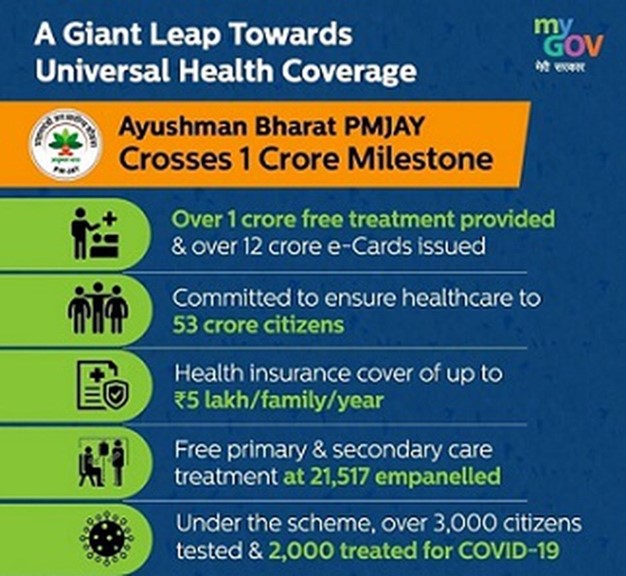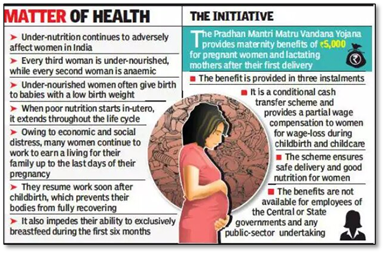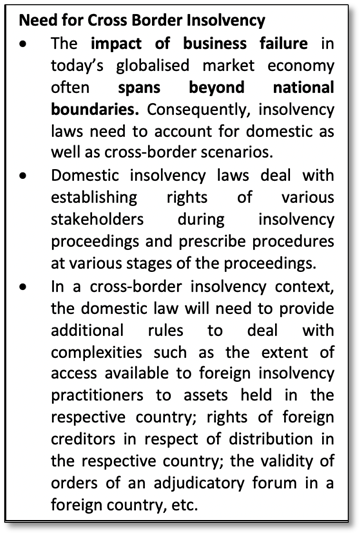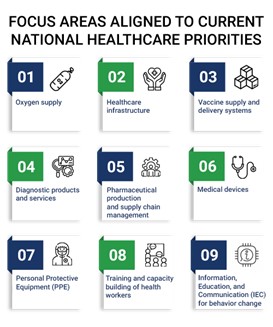Thursday, 17th February 2022
Green Energy Corridor
In News
The Cabinet Committee on Economic Affairs has recently approved ₹12,000 cr worth intra-state transmission system- the Green Energy Corridor phase-II.
About the News
- Add on to Phase I: This scheme is in addition to Green Energy Corridor (GEC)-Phase-I which is already under implementation in the states of Andhra Pradesh, Gujarat, Himachal Pradesh, Karnataka, Madhya Pradesh, Maharashtra, Rajasthan and Tamil Nadu.
- Evacuation of Renewable Energy: The Phase II of the scheme targets the evacuation of renewable energy from 20 GW power projects in the above seven states. The transmission systems will be created over a period of five year from Financial Year 2021-22 to 2025-26.
- Central Financial Assistance: It will have Central Financial Assistance (CFA) at 33% of the project cost which will help in offsetting the Intra-State transmission charges and thus keep the power costs down.
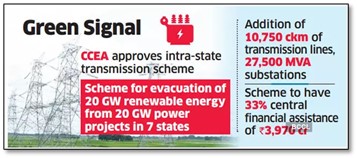
The Green Energy Corridor Project
- It is a project for evacuation of renewable energy from generation points to the load centres by creating intra-state and inter-state transmission infrastructure.
- Power evacuation means a facility that allows generated power to be immediately transmitted from a generating plant to the grid for further transmission/ distribution to load centres.
- The intra-state transmission component of the project is implemented by the respective states and the inter-state transmission component by Power Grid Corporation of India (PGCIL).
- For the project implementation, PGCIL has taken loans from Asian Development Bank and the funding of green energy corridors in both intra and inter State transmission projects, takes place under the framework of cooperation between Govt. of India and Govt. of Germany where KfW Germany provides a soft loan to the tune of Euro 1 billion.
- Significance of the scheme:
- The scheme will contribute to long term energy security of the country and promote ecologically sustainable growth by reducing carbon footprint.
- It will generate large direct and indirect employment opportunities for both skilled and unskilled personnel in power and other related sectors.
- The scheme will help in achieving the target of 450 Gw installed RE capacity by 2030.
For articles related to this topic, please refer to the following links:
- https://edukemy.com/current-affairs/gazette/2021-10-20/geospatial-energy-map-of-india
- https://edukemy.com/current-affairs/gazette/2021-12-07/green-energy-corridor-project
- https://edukemy.com/current-affairs/gazette/2021-10-25/indias-global-grid-declaration
- https://edukemy.com/current-affairs/gazette/2021-08-18/one-sun-one-world-one-grid
Source:
- Cabinet approves ₹12,000 cr phase-II of green energy corridor: Anurag Thakur
- Govt approves Rs 12,000-cr Green Energy Corridor Phase-II3
Image source:
Solar waste
In News
IRENA report has estimated global photovoltaic waste to touch 78 million tonnes by 2050.
About the News
- The International Renewable Energy Agency (IRENA) has recently estimated that the global photovoltaic waste will touch a new high by 2050, with India expected to be one of the top five photovoltaic-waste creators.
- India has set a target of producing 100 GW of solar energy by 2022. The cumulative capacity of grid-connected solar photovoltaic (PV) installations is around 40 GW and of the current capacity, about 35.6 GW, is generated from ground-mounted plants and 4.4 GW from rooftop solar. A gigawatt is a 1,000 megawatt.
Creation of Solar Wastes
- Solar panel’s life: Solar panels have an estimated life of 25 years, and once life cycle is over generating a large quantity of solar waste. Besides, there is also waste generation from damaged PV modules especially during transportation and installation.
- End-of-life was only one of the possible waste streams for PV modules and there were several other stages where modules could get damaged and were discarded, especially during transportation and installation.
- Additionally, modules could develop defects during the plant operations and be discarded even before their scheduled life span.
India’s standing w.r.t. Solar Waste
- PV modules had so far likely generated a cumulative waste of nearly 285,000 tonnes, as of FY21, from the early-life loss of the installed 40 GW grid-connected solar capacity.
- India currently considers solar waste a part of electronic waste and does not account for it separately.
- While India ramps up its solar power installation, it does not yet have a firm policy on managing waste that results from used solar panels or from the manufacturing process
- Much of India’s solar PV manufacturing uses imported components with parts mostly sourced from China. The import bill for solar cells stood at Rs 4,229 crore for FY22 (April to November), of which China accounts for 91%.
- India accounts for merely 1% of the global production capacity; in contrast, China makes up 71%. With India missing competitiveness, there is huge dependence on imports of solar cells and modules.
- There was no commercial raw material recovery facility for solar e-waste operational in India, but a pilot facility for solar panel recycling and material recovery had been set up by a private company in Gummidipoondi, Chennai, Tamil Nadu.
- A committee had been constituted under the chairmanship of the Minister for New and Renewable Energy’s Secretary to propose an action plan to evolve a “circular economy” in solar panel, through reuse/recycling of waste generated.
For articles related to the topic, please refer to the following links:
- https://edukemy.com/current-affairs/gazette/2021-05-27/circular-economy-in-electronics-and-electrical-sector
- https://edukemy.com/current-affairs/gazette/2021-09-01/e-source
- https://edukemy.com/current-affairs/gazette/2021-10-22/energy-storage-in-power-sector
- https://edukemy.com/current-affairs/gazette/2021-11-08/isros-solar-power-calculator
- https://edukemy.com/current-affairs/gazette/2021-08-18/one-sun-one-world-one-grid
- https://edukemy.com/current-affairs/gazette/2021-11-18/worlds-largest-solar-park
Sources:
Anti-Mob lynching bill
In News
Anti-mob lynching bills passed by 4 Assemblies are at various levels of non-implementation.
What is Mob Lynching?
- Mob lynching is a term used to describe the acts of targeted violence by a large group of people.
- They are an intentional extra-judicial form of punishment by the mob. The conviction rate in cases of lynching is as low as 16 per cent.
- In 2017, the National Crime Records Bureau (NCRB) collected data on mob lynching, hate crimes and cow vigilantism but it was not published and discontinued as these crimes are not defined and the data were found to be unreliable.
Punishment under IPC
As there is no separate definition for lynching under the IPC, cases are dealt with under Sections 300 and 302 of the IPC, pertaining to murder and read with section 149 and section 34.

Problems with framing charges under IPC
- If a number of accused are acquitted and the total number of accused becomes less than five, charges under Section 149 will be removed due to non-fulfilment of the criteria of unlawful assembly. Others cannot be convicted under Section 302 until the charges are reframed.
- Section 34 of the Indian Penal Code deals with an offence which is committed by several persons in furtherance of common intention.
- It is difficult to prove common intent of the accused, as a court in 1945 case of Mahboob Shah v. Emperor observed that ‘common intention’ implies the pre-arranged plan or prior meeting of minds or prior consultation between all the persons constituting the group. But, mob lynching in most of the cases is an instantaneous decision of the mob.
- Also, Criminal law runs on the Blackstone's ratio. It is plausible that some persons are passive witnesses and may have joined the assembly as curious spectators. Hence, section 149 may fall through when the case reaches the court.
Status of Anti-lynching law in India
- During a writ hearing in 2018, Supreme Court directed states to take preventive measures in cases of mob incidents. Consequently, four states have so far passed anti-mob lynching bills that are at various stages of enactment. Jharkhand, Rajasthan, West Bengal and Manipur have passed the Anti-lynching Bill.
- In 2018, the Supreme Court asked Parliament to make lynching a separate offence.
- The Central government has decided to overhaul the IPC and the Code of Criminal Procedure (CrPC) based on a Committee for Reforms in Criminal Laws. Mob-lynching would also be examined by the committee and the suggestions received would be examined by the MHA before changes are adopted.
Sources:
- https://www.thehindu.com/news/national/anti-mob-lynching-bills-passed-by-4-assemblies-at-various-levels-of-non-implementation/article65052872.ece
- https://www.outlookindia.com/website/story/opinion-mob-lynching-a-crime-that-exonerates-the-offenders-in-india/358031
- https://acleddata.com/2021/05/03/cow-protection-legislation-and-vigilante-violence-in-india/
Budhu Bhagat
On February 17, 1792, Veer Budhu Bhagat, a charismatic warrior was born at Silagain village of present-day Jharkhand. Born in the family of farmer Budhu Bhagat from his early childhood days hated the British and their authority over his territories. He had a deep interest in fencing along with archery. He always had wanted to involve himself in an armed struggle against the British regime. In the year 1831 Veer Budhu Bhagat led Kol rebellion against the British at Singhbhum. Other people who led this revolt were Madara Mahato, Joa Bhagat, etc. This was 27 before the great mutiny of 1857 and this can also be seen as the first war of Independence. In the year 1832 Budhu Bhagat led the Larka rebellion and motivated the tribal people to fight against the oppressive rule of the British and zamindars. The rebellion completely shook the British authority and soon places like Sonpur and all over Chhotanagpur. The tribal army of Budhu Bhagat adopted the policy of Guerrilla warfare and they completely demoralized the British soldiers.

Source:
Climate Smart Agriculture
In News
The Economic Survey 2021-22 has documented various environmental damage caused due to agriculture and discussed the National Innovations on Climate Resilient Agriculture.
About the National Innovations on Climate Resilient Agriculture
- Indian Council of Agricultural Research (ICAR), Ministry of Agriculture and Farmers Welfare, Government of India launched a flagship network project ‘National Innovations in Climate Resilient Agriculture’ (NICRA) in 2011.
- In the strategic research, the main thrust areas covered are (i) identifying most vulnerable districts/regions, (ii) evolving crop varieties and management practices for adaptation and mitigation, (iii) assessing climate change impacts on livestock, fisheries and poultry and identifying adaptation strategies.

What is Climate Resilient/ Smart Agriculture?
Climate-smart agriculture (CSA) is an approach that helps guide actions to transform agri-food systems towards green and climate resilient practices. CSA supports reaching internationally agreed goals such as the SDGs and the Paris Agreement. It aims to tackle three main objectives:
- Productivity: CSA aims to sustainably increase agricultural productivity and incomes, without having a negative impact on the environment. This, in turn, will raise food and nutritional security. A key to raising productivity is sustainable intensification.
- Adaptation: Reduce the exposure of farmers to short-term risks, while also strengthening their resilience by capacity building to adapt. Attention to protecting the ecosystem services for maintaining productivity and our ability to adapt to climate changes.
- Mitigation: Wherever and whenever possible, CSA should help to reduce and/or remove greenhouse gas (GHG) emissions through managing soils and trees in ways that maximizes their potential to act as carbon sinks.
Need for Climate Smart Agriculture in India
- High Methane emissions: Agriculture contributes 73 per cent of the India’s methane emissions and is world’s third largest emitter of methane.
- GHG Emissions due to Paddy: Rice cultivation is the third highest source (17.5 per cent) of GHG emissions in Indian agriculture after enteric fermentation (54.6 per cent) and fertiliser use (19 per cent).
- Paddy fields are anthropogenic sources of atmospheric nitrous oxide and methane, which are 80-83 times more powerful than carbon dioxide in driving temperature increase.
- Yield reduction: In India, medium-term (2010-2039) climate change is predicted to reduce yields by 4.5 to 9 percent, depending on the magnitude and distribution of warming. Since agriculture makes up roughly 16 percent of India’s GDP, a 4.5 to 9% negative impact would translate into roughly up to 1.5 percent of GDP per year.
- Food and nutritional security: Countries like India are more vulnerable due to high population depending on agriculture. Climate change has become an important area of concern for India to ensure food and nutritional security for growing population.
- Groundwater Exploitation: The Economic Survey 2021-22 points out that India is over-exploiting its ground water resource, particularly in the northwest and some parts of south India.
- Economic Impact: Agriculture sectors in developing countries absorb 22% (approx.) of economic impact caused by medium/ large scale natural hazards and disasters. Integrating adaptation efforts and finance into these sectors is critical.

How will Climate Smart Agriculture help address the above issues?
- CSA addresses climate change: CSA systematically integrates climate change into the planning and development of sustainable agricultural systems.
- CSA integrates multiple goals and manages trade-offs: Ideally, CSA produces triple-win outcomes: increased productivity, enhanced resilience and reduced emissions.
- CSA maintains ecosystems services: Ecosystems provide farmers with essential services, including clean air, water, food and materials. CSA adopts a landscape approach that builds upon the principles of sustainable agriculture, integrated planning and management.
- CSA has multiple entry points at different levels: It has multiple entry points, ranging from the development of technologies and practices to the elaboration of climate change models and scenarios, information technologies, insurance schemes, value chains and the strengthening of institutional and political enabling environments. It includes the integration of multiple interventions at the food system, landscape, value chain or policy level.
- CSA is context specific: What is climate-smart in one-place may not be climate-smart in another, and no interventions are climate-smart everywhere or every time. CSA focuses on different elements that interact at the landscape level, within or among ecosystems.
What can be the hurdles in implementing Climate Smart Agriculture in India?
- Low Adoption: Investment costs associated with cost to acquire the factors of production such as the purchase equipment, machinery, or materials, labour and entrepreneurship. Therefore, any technology that requires new or specialized equipment will have low adoption by poor households.
- Issues with Agriculture Policies: The environmental damage due to agriculture in India is largely a result of the various kinds of subsidies — on urea, canal irrigation and power for irrigation — as well as the minimum support prices (MSP) and procurement policies concentrated on a few states and largely on two crops, rice, and wheat.
- Non- accounting of some GHG emissions: Emissions due to burning rice residues, application of fertilisers, production of fertilisers for rice, energy operations like harvesting, pumps, processing, transportation are not accounted for in the GHG emissions in rice production.
- Absence of Carbon Price: According to the IMF, the world needs a carbon tax of $ 75 per tonne by 2030 to reduce emissions to a level consistent with a 2-degree Celsius warming target. India does not have an explicit carbon-price yet.
- Reluctance to new Methods: The assurance of private benefits in the short term provides farmers with more incentive to implement what they know traditionally, rather than long-term benefits such as carbon trading in carbon markets.
Way Forward: Actions to implement a CSA approach
- Policy Revision: There is need to revisit policies to subsidise power and fertilisers, MSP and procurement and reorient them towards minimising GHG emissions.
- Carbon Markets: Farmer groups and the private sector can be mobilised to develop carbon markets in agriculture, both at the national and international levels, which can reward farmers in cash for switching from carbon-intensive crops such as rice to low-carbon-intensive crops or improving farming practices in rice systems to lower GHG emissions.
- Trade policy: It must be aligned with climate objectives and ensure that open trade plays its role as an adaptation mechanism without impeding mitigation objectives.
- Collaborations: Collaborative approaches between the government agencies and the farmers, enabling mechanised farming and opening up to new technological inventions. Big data and digital innovations can empower farmers to face climate-linked challenges in agriculture.
- Direct-seeded rice, in which rice seeds are sown and grown directly into the field instead of the need for puddling in water, is increasingly being explored as a climate mitigation strategy to cut back on greenhouse gas emissions associated with the volume of water required to grow traditional varieties in flooded fields.
- Enhancing financing options: New climate financing instruments such as the Green Climate Fund are currently under development and could be a way of spurring sustainable agricultural development. National sector budgets will continue to be the main sources of funding.
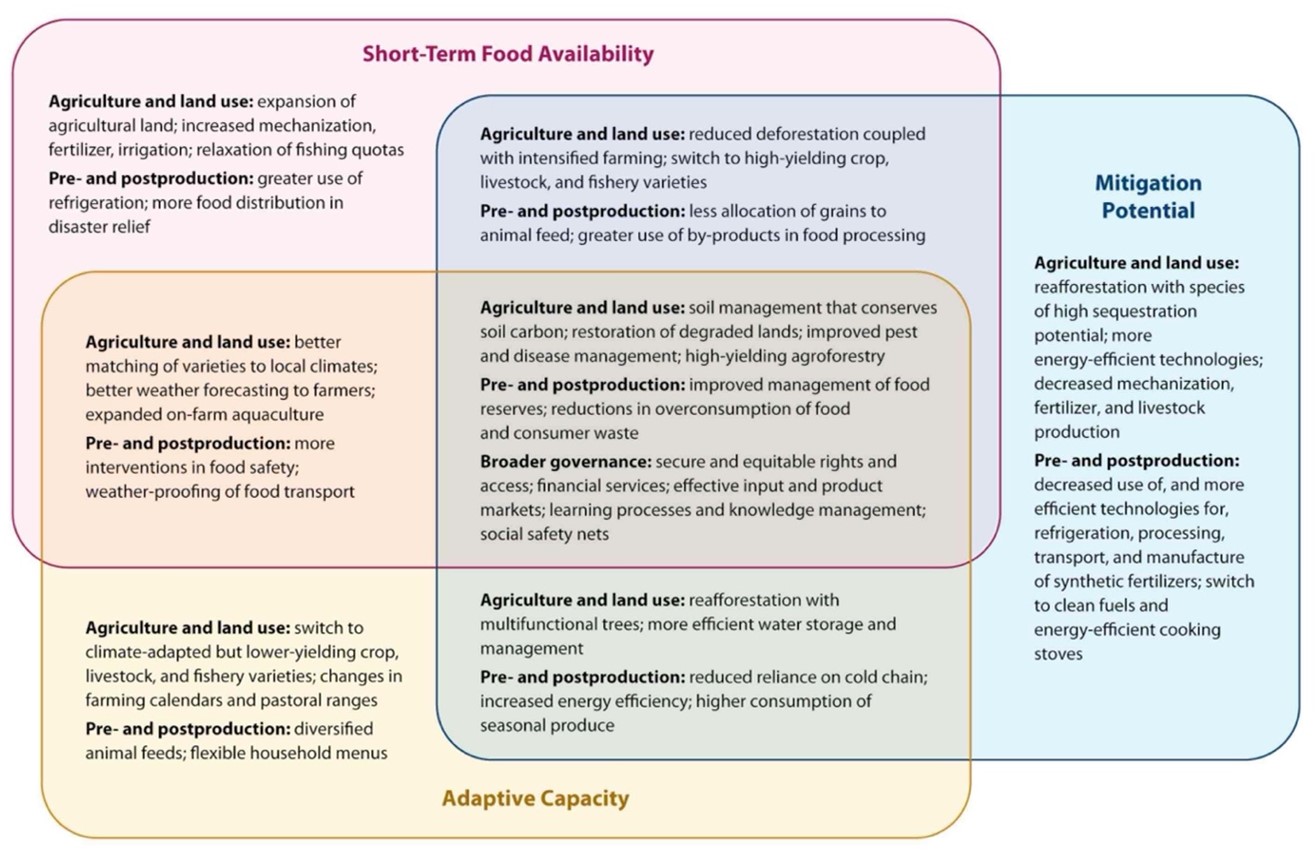
For articles related to the topic, refer to the following links:
- https://edukemy.com/current-affairs/gazette/2021-09-29/crop-varieties-with-special-traits
- https://edukemy.com/current-affairs/gazette/2021-06-14/climate-change-and-global-food-production
- https://edukemy.com/current-affairs/gazette/2021-06-04/precision-farming
- https://edukemy.com/current-affairs/gazette/2022-02-16/agriculture-mechanization
- https://edukemy.com/current-affairs/gazette/2021-08-11/nanotechnology-in-agriculture
- https://edukemy.com/current-affairs/gazette/2021-09-15/digital-agriculture
Question: Elaborate on the need for India to adopt climate smart agriculture. What are the steps needed in this direction?
Sources:
- National Innovation on Climate Resilient Agriculture:
- Economic Survey 2021-22:
- Climate-Smart Agriculture:
- For ‘climate smart’ agriculture:
- Climate-smart agriculture:
- Addressing challenges in food systems with climate-smart agriculture:
- From theory to practice: Perspectives on Climate-Smart agriculture in India and Africa:
- What is climate-smart agriculture?:
- For ‘climate smart’ agriculture:
Erra Matti Dibbalu - Edukemy Current Affairs
This is image of Erra Matti Dibbalu in Visakhapatnam. Volunteers and members of NGOs have started clean-up drive at Erra Matti Dibbalu. Located between Visakhapatnam and Bheemunipatnam, the Erra Matti Dibbalu are rare red sand dunes that are a reminder of the million years of geological processes, and among the 34 notified National Geological Heritage Monument Sites of India by the Geological Survey of India. The width of the dunes, which runs for five kilometres along the coast, varies from 200 metres to two kilometres. Located at a distance of 16 kilometres from Visakhapatnam, the towering red sand dunes with patches of greenery is like a meandering maze. The dunes are very fragile and liable to natural degradation leading to a gradual loss of material. Ecologically ,these red sand dune sediments particularly hold significance as they are the result of the combined effect of numerous factors including global climatic changes, sea-level variations, monsoonal variability and as a result serve as valuable paleo-environment indicators.

Source:
Stem Cell Transplant - Edukemy Current Affairs
- Context: A U.S. patient with leukemia has become the first woman to be cured of HIV after receiving a stem cell transplant from a donor who was naturally resistant to the HIV virus.
- The stem cells from umbilical cord blood was used to treat the woman’s acute myeloid leukemia - a cancer that starts in blood-forming cells in the bone marrow.
- Stem cells are special cells that can make copies of themselves and change into the many different kinds of cells that our body needs.
- A bone marrow transplant also called stem cell transplant, is a medical treatment that replaces the bone marrow with healthy cells.
- The replacement cells can either come from one’s own body or from a donor.
- Transplantation can be used to treat certain types of cancer, such as leukemia, myeloma, and lymphoma, and other blood and immune system diseases that affect the bone marrow.
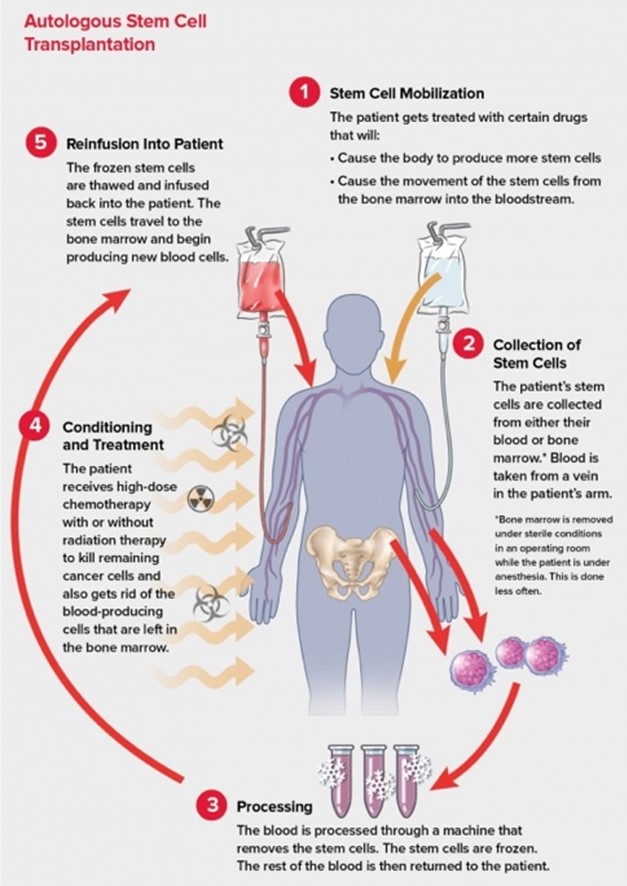
Source:
- First woman reported cured of HIV after stem cell transplant
- What is a Bone Marrow Transplant (Stem Cell Transplant)?
Image source:
Crimson Rose butterflies
- Context: The pristine beach of Dhanushkodi has witnessed a rare phenomenon of thousands of Crimson Rose butterflies swarming the flowering plants along the beach.
- Dhanushkodi is located at the southern-most tip of the Rameswaram island in the Indian peninsula.
- Crimson Rose (Pachliopta hector), is a large swallowtail butterflybelonging to the genus Pachilopta (roses) of the red-bodied swallowtails.
- It is a large butterfly with a mix of black, white and crimson colours on its wings and body and is known for crossing the sea to migrate to Sri Lanka.
- It is found in India, Sri Lanka, Maldives and along the coast of western Myanmar.
- In India, it is found in the Western Ghats (Tamil Nadu, Kerala) and Eastern Ghats (West Bengal and Odisha) and also in Andaman Islands.
- It is characterized as "Least Concern (LC)" in IUCN Red List.

Source:
Image source:
Tarapur Shahid Diwas
- Context: The Bihar Government has recently announced that February 15 would be henceforth commemorated as “Shahid Diwas”.
- This is in memory of the 34 freedom fighters who were killed by police in Tarapur town (now subdivision) of Bihar’s Munger district 90 years ago.
- On February 15, 1932, a group of young freedom fighters had planned to hoist an Indian national flag at Thana Bhavan in Tarapur.
- The Police (Britishers) who were aware of the plan, arrived at the spot and carried out a brutal lathicharge on the freedom fighters.
- In retaliation, a 4,000-strong crowd pelted the police with stones, injuring an officer of the civil administration following which there was an indiscriminate opening of fire on the crowd that resulted in huge fatality.
- This massacre is believed to be the biggest one carried out by the British police after the one in Jallianwala Bagh in Amritsar in 1919.
- The trigger for the assembly of the crowd was the hanging of Bhagat Singh, Sukhdev, and Rajguru in 1931, followed by the collapse of the Gandhi-Irwin Pact, arrest of the Mahatma in 1932, Congress being declared an illegal organisation, and Nehru, Patel, and Rajendra Prasad being jailed.

Source:
Image source:
Public order
- Context: Recently, the judges of the Karnataka HC have heard an argument on whether the state can justify the ban on students wearing a hijab in educational institutions on the ground that it is violative of ‘public order’.
- Public order is one of the three grounds on which the state can restrict freedom of religion. Public order is also one of the grounds to restrict free speech and other fundamental rights.
- Article 25 of the Constitution guarantees to all persons right to freedom and conscience and the right freely to profess, practise and propagate religion subject to public order, morality and health.
- Public order is normally equated with public peace and safety.
- According to List 2 of the Seventh Schedule of the Constitution, the power to legislate on aspects of public order rests with the states.
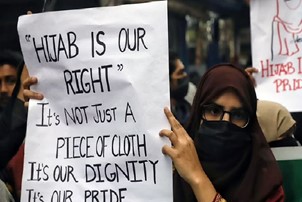
Source:
- Public order: A constitutional provision for curbing freedoms
- Hijab row: Public order not a ground to curb fundamental rights, say petitioners
Image source:
Outcome Budget: Outlays fine, what about outcomes?: FE
Essence: The article highlights the fact that with the announcement of budget every year, most people focus on the budget speech, headline numbers and few major outlays. However, most of the people miss out on outcomes, which is a better way of looking at the economy. As the outcomes help in listing physical targets to be achieved, it helps assigning accountability and bringing transparency into budget expenditures.
The article also provides examples of schemes on agriculture whose outcome budget provides a little different picture from outlay budget. It is the right time to realize that if the roadmaps and key milestones are not synced, budget outlays will continue to be just expenditure targets. What we need is accountable, proactive, and purposeful style of governance that is possible only with outcome budgeting.
Why should you read this article?
- To understand the importance of outcome budgeting.
- To understand the difference between the outlay and outcomes with the examples of schemes from agricultural department.
Source:
A case for a more federal Judiciary: TH
Essence: Indian Constitution has provided for dual polity in the form of federal relation between union and state governments. However, when it comes to judiciary, the High Courts and the Supreme Court form one single integrated judiciary. Constitutionally, except in appellate sense, the position of the Supreme Court and High court is equal.
However, in recent years there appears to be a certain shift in power towards SC. Some trends like power of Supreme Court collegium to appoint and transfer judges of the High court and SC entertaining cases pertaining to trifling matters provides enough hint of that.
International experiences show that centralization of the judiciary has a tendency to promote centralization in polity. If India wants to avoid that, the Supreme Court has to restore the federal balance by re-empowering the High Courts.
Why should you read this article?
- To understand the constitutional position of the Supreme Court and High court relative to each other.
- To understand how the balance of power between SC and HC has been shifting and what can be its repercussions.
Source:
Indo-Pacific: How India is countering China: HT
Essence: The editorial points towards the multiple ways India has applied to handle the emerging situation around the World. India has been silent on Myanmar, cautious on Ukraine and tough on China in its external policy. Since the other three partners of QUAD were already on allied terms, it is India whose addition has shifted the pivot of counterbalancing China’s dominance. In addition, the strategic defense deal with Philippines has helped in stabilizing India’s position as a leader, security provider and a channel to establish/maintain rule-based order in Indo-Pacific.
India has been vocal to rebuff China’s statement on futility of QUAD and alongside has candidly started to discuss the border disputes with China with its defense partners, something it used to refrain from. Using the Duck Test, countries like India and Philippines have started to understand their centrality and strategic positioning at crossroads of the busiest sea lanes. It will help get nations past coercive and aggressive practices of China and set equilibrium with stable long-term consequences.
Why should you read this article?
- To understand increased role of India in Indo-Pacific post USA’s strategy release for the region.
- To know about the differential diplomacy India has adopted to counter the global adversities.
Source:
Sandhya Mukherjee
Background:
Veteran Bengali singer Sandhya Mukherjee, who was awarded the Padma Shri award recently, died at the age of 90 on February 15, 2022. She had refused to accept the award, calling it “insulting and demeaning”.
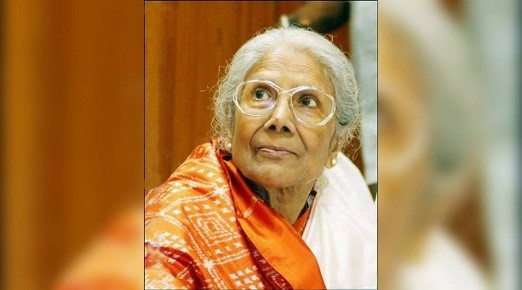
About the Legend
- Sandhya Mukherjee was born and brought up in Kolkata.
- She took music lessons from A T Kannan and Chinmoy Lahiri before training under Patiala gharana legend Ut Bade Ghulam Ali Khan.
- She sang for around 17 Hindi films and then settled in Kolkata as an eminent playback singer in Bengali cinema.
- Sandhya Mukherjee's songs played a key role in Bangladesh's liberation war as they motivated the soldiers and also mobilised the masses by creating a patriotic fervour.
- She was among the first foreign artists to visit Bangladesh for a concert, after its formation.
- She was conferred a national award in 1971 for her work in a Bengali, along with State honour the Banga Bibhushan Samman award.
- But she refused the Padma Shri award conferred upon her in 2022, as she considered it too late to recognise her and as an insult for her effort.
Quote: The world needs strong women. Women who will lift and build others, who will love and be loved, women who live bravely, both tender and fierce, women of indomitable will.- Anonymous
Source:
Share the article
Get Latest Updates on Offers, Event dates, and free Mentorship sessions.

Get in touch with our Expert Academic Counsellors 👋
FAQs
UPSC Daily Current Affairs focuses on learning current events on a daily basis. An aspirant needs to study regular and updated information about current events, news, and relevant topics that are important for UPSC aspirants. It covers national and international affairs, government policies, socio-economic issues, science and technology advancements, and more.
UPSC Daily Current Affairs provides aspirants with a concise and comprehensive overview of the latest happenings and developments across various fields. It helps aspirants stay updated with current affairs and provides them with valuable insights and analysis, which are essential for answering questions in the UPSC examinations. It enhances their knowledge, analytical skills, and ability to connect current affairs with the UPSC syllabus.
UPSC Daily Current Affairs covers a wide range of topics, including politics, economics, science and technology, environment, social issues, governance, international relations, and more. It offers news summaries, in-depth analyses, editorials, opinion pieces, and relevant study materials. It also provides practice questions and quizzes to help aspirants test their understanding of current affairs.
Edukemy's UPSC Daily Current Affairs can be accessed through:
- UPSC Daily Current Affairs can be accessed through Current Affairs tab at the top of the Main Page of Edukemy.
- Edukemy Mobile app: The Daily Current Affairs can also be access through Edukemy Mobile App.
- Social media: Follow Edukemy’s official social media accounts or pages that provide UPSC Daily Current Affairs updates, including Facebook, Twitter, or Telegram channels.

